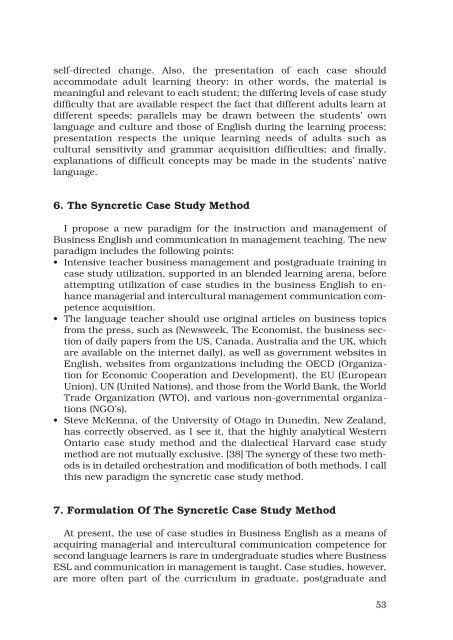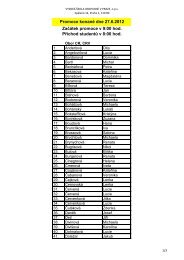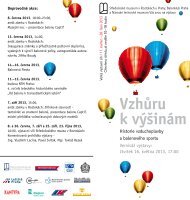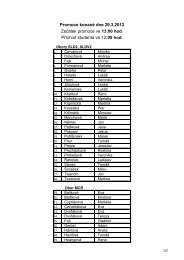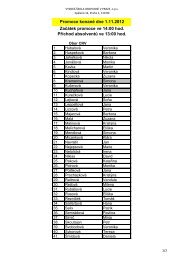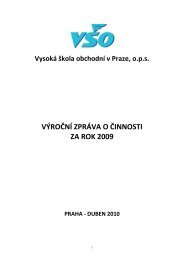Sestava 1 - Vysoká škola obchodnà v Praze
Sestava 1 - Vysoká škola obchodnà v Praze
Sestava 1 - Vysoká škola obchodnà v Praze
Create successful ePaper yourself
Turn your PDF publications into a flip-book with our unique Google optimized e-Paper software.
self-directed change. Also, the presentation of each case should<br />
accommodate adult learning theory: in other words, the material is<br />
meaningful and relevant to each student; the differing levels of case study<br />
difficulty that are available respect the fact that different adults learn at<br />
different speeds; parallels may be drawn between the students’ own<br />
language and culture and those of English during the learning process;<br />
presentation respects the unique learning needs of adults such as<br />
cultural sensitivity and grammar acquisition difficulties; and finally,<br />
explanations of difficult concepts may be made in the students’ native<br />
language.<br />
6. The Syncretic Case Study Method<br />
I propose a new paradigm for the instruction and management of<br />
Business English and communication in management teaching. The new<br />
paradigm includes the following points:<br />
• Intensive teacher business management and postgraduate training in<br />
case study utilization, supported in an blended learning arena, before<br />
attempting utilization of case studies in the business English to enhance<br />
managerial and intercultural management communication competence<br />
acquisition.<br />
• The language teacher should use original articles on business topics<br />
from the press, such as (Newsweek, The Economist, the business section<br />
of daily papers from the US, Canada, Australia and the UK, which<br />
are available on the internet daily), as well as government websites in<br />
English, websites from organizations including the OECD (Organization<br />
for Economic Cooperation and Development), the EU (European<br />
Union), UN (United Nations), and those from the World Bank, the World<br />
Trade Organization (WTO), and various non-governmental organizations<br />
(NGO’s).<br />
• Steve McKenna, of the University of Otago in Dunedin, New Zealand,<br />
has correctly observed, as I see it, that the highly analytical Western<br />
Ontario case study method and the dialectical Harvard case study<br />
method are not mutually exclusive. [38] The synergy of these two methods<br />
is in detailed orchestration and modification of both methods. I call<br />
this new paradigm the syncretic case study method.<br />
7. Formulation Of The Syncretic Case Study Method<br />
At present, the use of case studies in Business English as a means of<br />
acquiring managerial and intercultural communication competence for<br />
second language learners is rare in undergraduate studies where Business<br />
ESL and communication in management is taught. Case studies, however,<br />
are more often part of the curriculum in graduate, postgraduate and<br />
53


